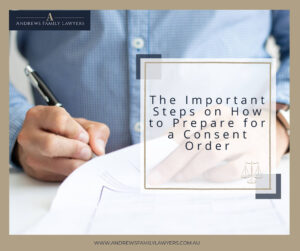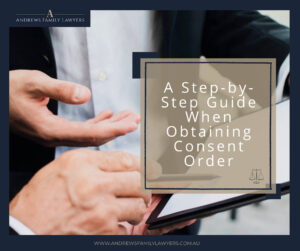When you’re dealing with custody of a child, it’s crucial to get the process right, especially when concerns like physical or psychological harm or family violence are involved. Child custody arrangements and other parenting decisions can have long-term effects on both children and co-parents.
Under family law, there are different options available, including shared parental responsibility and various child custody arrangements, and it’s important to understand what each means. We want to use this article to help you determine the plan that’s best for you and your family.
Discover practical insights from experienced family lawyers to help you make the best decisions for you and your child.
Key takeaways
Legal custody involves a parent’s right to make long-term decisions about a child’s welfare.
Physical custody refers to where the child lives and may be shared or granted to one parent.
Joint custody is often effective when both parents are cooperative and live near each other.
Full custody may be granted when one parent is unable or unavailable to meet their responsibilities.
Documenting parenting arrangements
Decisions around parenting—such as child support, consent order, and spend time can be documented formally or informally.
Informal arrangements
If parents are on good terms, they can draft a parenting arrangement to document their agreement. While this option can work for some, it has risks. Since parenting plans aren’t legally enforceable, it’s difficult for a parent to hold the other parent accountable if they breach the agreement
It’s important to consider factors such as child support, the child’s relationship with each parent, whether to apply for consent orders, and the benefits of seeking legal advice to ensure you create a strong and sustainable plan.
Child's best interests
The child’s best interests are central to all parenting arrangements. The custody arrangement should prioritise the child’s safety, ensuring their health and wellbeing are protected from family violence and other risks. It’s also important for children to maintain a meaningful relationship with both parents, if safe to do so, while ensuring all the duties of parenting are clearly understood and met.
Major decisions
The plan should cover how major decisions are going to be handled within the custody arrangement. Separated parents should consider how to manage healthcare concerns, the children’s education, and their cultural and religious upbringing.
The child’s age, whether equal time spent with each parent is appropriate, and how children benefit from stability should all be factored in. These long-term considerations should form part of a clear legal arrangement.
Communication
How will the child stay in contact with each parent under the custody arrangement? In situations where one parent maintains visitation rights, a weekly phone call may be appropriate. It’s important to set out specific periods for face-to-face time and how long each visit will last.
Parents should also consider how they will financially support the child, especially in cases involving domestic violence, and whether assistance from human services may be needed.
Dispute resolution
Spouses often overlook the importance of dispute resolution, which plays a key role in maintaining a stable parenting order. For many co-parents, it’s unrealistic to expect agreement on every aspect of the child’s upbringing.
Your plan should prioritise the child’s best interest and outline how disagreements will be managed while promoting shared responsibility and meaningful relationships. You might decide to keep all communication to emails, and if a disagreement escalates, engaging a mediator can help work through the issues constructively.
Court order
The other option is to apply to the Court for a court order. If the parents have an existing parenting plan, this can be formalised through a consent order. This is generally recommended for the benefit of the child.
If parents can’t agree on an arrangement, they’re required to attend family mediation to mediate their differences. If dispute resolution doesn’t produce a suitable outcome, the Court can grant parenting orders that meet the best interests of the child.
Have questions about your child custody arrangement? Contact our family law team today for personalised guidance and support.
Types of Child Custody Arrangements in Australia
There are many ways to arrange child custody in Australia. There are two primary custody areas: physical custody and legal custody.
Legal custody
Legal custody refers to a parent’s right to make decisions affecting the child’s life. In the Family Law Act, this is known as parental responsibility, and the child’s best interest is the primary consideration when determining how this responsibility is shared. This also extends to making appropriate visitation arrangements that support the child’s wellbeing and stability.
Parental responsibility
The Family Law Act defines parental responsibility as all of the duties, powers and authority that parents have in relation to their child. The Family Court previously assumed equal shared parental responsibility to be in the child’s best interests.
This meant that both parents had an equal say in major long-term decisions such as their child’s education, healthcare and living arrangements. However, it no longer starts from this position. Regardless, we recommend co-parents find a way to both maintain a meaningful relationship in their child’s life.

Physical custody
Physical custody, as part of child custody arrangements, refers to the child’s living arrangements. Parents can choose for the child to live primarily in one residence or share physical custody between both homes.
Joint custody
As part of child custody arrangements, parents can decide that the child will split their time between two residences. This can work well, but there are many factors to consider before choosing this option.
Proximity. If you don’t live in close proximity to the other parent, it can make splitting living arrangements difficult and stressful for children.
Parental capacity. Are both parents able to accommodate caring for their child on a regular basis? For example, if the sole parent travels frequently for work, these arrangements may not be appropriate.
Specific needs. If a child has specific medical requirements or other needs, traveling between residences regularly may be inappropriate.
Joint custody example
Jack and Emma separated after nine years of marriage. They have two daughters aged six and eight. They both live within ten minutes of their children’s school in Brisbane. Their separation was amicable and both wish to remain active in their children’s lives.
They have equal say in major parenting decisions and agreed to equal time with the children. The children stay with each parent on a week-on, week-off schedule. They alternate special occasions, such as Christmas and birthdays, each year.
They use the Our Family Wizard app to track their schedule and log expenses. The kids stay in contact with the other parent during the week over the phone. Jack and Emma attend school events and medical appointments together, by agreement. School emails go to both parents.
When disputes arise, they agreed to seek family dispute resolution. They have written down the details of their agreement and both keep a copy. The agreement is reviewed every year around the school holidays to determine if there should be any changes.
Jack and Emma are prioritising stability and predictable routines for their children. This helps them thrive in their education and stay healthy.
Both parents feel like their voices are being heard and respected. The agreement focuses on the children and has flexibility which is important as young children grow.
Full custody
Often, full custody will be granted to one parent. This can be the best arrangement for various reasons.
Preference. The sole parent may not be inclined to have the responsibility of having their child live with them.
Availability. If a parent cannot be present to take on parental duties, then the other parent having full custody would be best.
Historical roles. Sole parent may have performed the role of primary caregiver during the meaningful relationship, and maintaining this continuity through full custody may be the most suitable option in child custody arrangements.
Family violence
One major determining factor in full custody arrangements is the existence of physical or psychological harm. The likelihood of a child experiencing or being exposed to child abuse is a primary consideration when deciding on parental responsibilities in the Family Law Act.

Conclusion
Many divorces involve a child under the age of 18. In these circumstances, the child’s parents must consider how to organise their parenting responsibilities through appropriate child custody arrangements. You can document the arrangement informally or through court orders depending on the situation.
Child custody arrangements cover the decision-making responsibilities of each parent, as well as where the child will live. Living arrangements can be shared by the parents, or be given solely to one parent.
Peter provides exceptional service, is understanding and compassionate. He made sure everything was explained, was open and honest and always had my best interests at the forefront.
I would recommend Peter to anyone needing a family lawyer.
Sheree Anderson
If you’re organising child custody arrangements, it’s important to seek legal advice. Contact our office for a free consultation.




